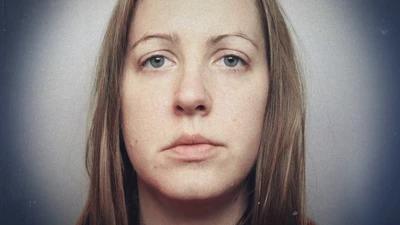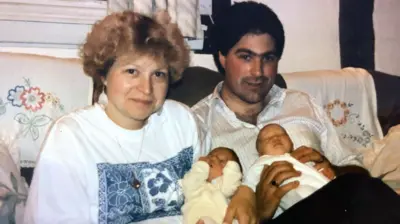We've updated our Privacy and Cookies Policy
We've made some important changes to our Privacy and Cookies Policy and we want you to know what this means for you and your data.
Photographers use portraits and still life to highlight hunger
Three photographers feature in a new outdoor exhibition in London, highlighting malnutrition in the Central African Republic, South Sudan and Liberia.
Chris de Bode from the Netherlands, Abbie Trayler-Smith, from the UK, and Nora Lorek, from Sweden, use different visual storytelling styles, including drawing inspiration from Dutch 17th-Century still-life paintings.
The exhibition, Free From Hunger, is produced by international charity Concern Worldwide and Panos Pictures.
Here is a selection of images with captions from the photographers.
South Sudan, by Abbie Trayler-Smith
Image source, Abbie Trayler-Smith
"Kasima with her daily lunch of kudra and goat."
Image source, Abbie Trayler-Smith
"Tonj, 12, with his meal of peanut stew and sorghum at his home in Aweil, South Sudan."
Image source, Abbie Trayler-Smith
"Eunice and her husband have five children and live in Aweil, South Sudan."
Image source, Abbie Trayler-Smith
"Calaso, 15, with her nine-month-old niece Yasmiin."
Central African Republic (CAR), by Chris de Bode
To tell the stories of people's lives in post-conflict CAR, De Bode created a still-life photo of food and possessions in each location he visited.
He took inspiration from the aesthetic style of Dutch 17th-Century still-life paintings, to capture "the fragility and insecurity of the everyday lives of women and children living in CAR".
Image source, Chris de Bode/Panos Pictures
The photographer met Marie, 40, the mother of 15-month-old twins, Moise and Dorcas.
Dorcas recovered from severe malnutrition after she was admitted to a clinic run by UK non-governmental organisation Concern - but now Moise is being treated for malnutrition and diarrhoea at the same clinic.
De Bode photographed "a table in Marie's house, with amaranth leaves, a pot full of termite wood, a hymnbook and a hoe".
"Termite wood is used as a traditional cure for stomach ache, which she uses to treat her children," he says.
"Amaranth leaves are one of the most widely eaten green vegetables in sub-Saharan Africa.
"They are fast growing and drought tolerant and can be grown without the need to buy expensive seeds.
"[Marie] chose the hymnbook to represent her faith."
Image source, Chris de Bode/Panos Pictures
Mother of seven Natalie, 35, and her husband Beni, 39, received seeds, tools and training from Concern to help rebuild their lives after they fled their village during the conflict. From the seeds, they have harvested the groundnuts and squash leaves shown on the table.
"A table in Natalie's home, with a machete, radio, chicken-foot talisman, box of matches, hanging squash leaves and groundnuts in a bag," says De Bode, "the radio is one of their prized possessions. They are an important part of rural life for communities with no access to TV or internet - but they are only able to use them intermittently when they are able to buy batteries."
Image source, Chris de Bode/Panos Pictures
De Bode says of his picture of the table of the nutritional health officer at Gbandengue clinic: "On the table is a health register and notebook, stethoscope, CAR flag, official stamp with ink and pens and a photograph of Selefio Stanislas, the previous director of the facility, who died recently."
Image source, Chris de Bode/Panos Pictures
"A metal bowl on a table in Nadine's house with palm nuts, mushrooms, mashed cassava and avocados. All the items were bought from the local market that day to make a family meal.
"Nadine is a Mama Lumière in her community, which means she passes on her skills and knowledge to other women and encourages mothers to take their children to the nearby health facility at the first sign of malnutrition or sickness."
Liberia, by Nora Lorek
Image source, Nora Lorek/ Panos Pictures
Mum-of-five Handful Bowein, 30, and her son Israel, two.
"When Israel was 18 months old, he weighed just 4.4kg [9lb 11oz] and was unable to walk because he was severely malnourished," Lorek says.
"An infection that had developed after the birth of her first child meant Handful was unable to breastfeed any of her children."
Image source, Nora Lorek/Concern/Panos Pictures
Mary Wrobone, 46, is a member of a savings and loan association and mothers' group.
"Thanks to the training she has received in the mothers' group, she is able to demonstrate how to cook a meal for a sick or malnourished child," Lorek says.
"These cookery demonstrations show mothers how to prepare nutritious meals and diversify diets with vegetables and locally available fruit, like papaya, banana and pineapple."
Image source, Nora Lorek/ Panos Pictures
Seven-month pregnant mum-of-five Patience Darway, 35, told Lorek: ''I have learned new things with my friends this year. The most important is how to breastfeed my newborn properly and to include vegetables in the family diet.
"My vegetable garden is really useful. I used to have to buy [vegetables]. Now I just take from the garden. It means I can spend money on other needs."
Image source, Nora Lorek/ Panos Pictures
"Orphelia[, eight,] is in her first year in primary school. Jimmy[, 25,] is a member of Wrobone Town mothers' group and savings and loan association.
"When Jimmy's father fell ill last year, she made use of the community savings and loan association, borrowing money to hire labourers to cultivate her family's land.
"She was also able to start up a small business selling frozen food and even begin work on a new house."
Free From Hunger is at More London Riverside Development until 31 October.
Top Stories
More to explore
Most read
Content is not available








